Bird Behavior: Observing Herons
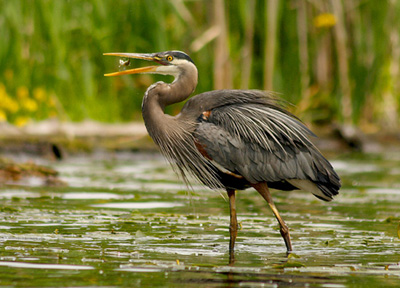
The study of bird behavior is a rich and rewarding field, and can lead to very exciting wildlife encounters.
One of the most charismatic and beautiful group of birds are the herons. These water-loving hunters demonstrate a wonderfully diverse range of behaviors when it comes to survival. Some of the everyday behaviors exhibited by a heron may include hunting, grooming, social-interactions, thermoregulation and resting.
Hunting
Perhaps the most exciting bird behavior to observe is hunting. The speed of a striking heron as it lunges forward to grab prey is really amazing. So is their ability to stand extremely still for lengths of time as they stalk their prey. Did you know that every heron species has its preferred hunting styles? Here are few styles you might observe and the species that typically do them:
- Hunting meadows. You might not think this is typical heron habitat, but great blue herons are often observed hunting voles in meadows with short grass, especially those near wetland areas. They will stand by a vole runway and watch for movement, then strike with lightning speed and grab one of these fat little rodents.
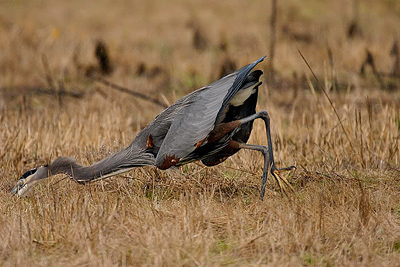
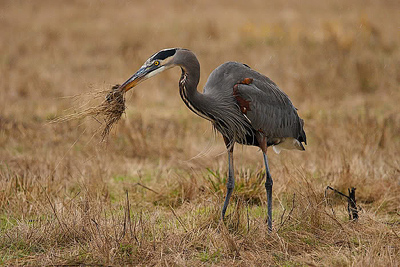
- Hunting in dense marshes. One particular heron species – called the American Bittern – specializes in hunting the tall, densely vegetated marshes. These herons have amazing camouflage because of their brown, striped coloration and due to the way they move. Bitterns often imitate the waving of the cattails and reeds when a breezes rustles through them. All the while, the bittern is watching closely for the movement of a frog or fish among the dense vegetation.
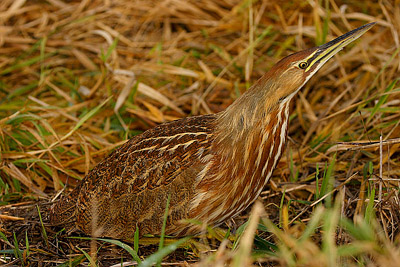
- Hunting from a perch. Green herons are small –bodied herons that often hunt from dense branches that are overhanging a wetland area. From here they stalk prey and make stabbing lunges are small fish and frogs.
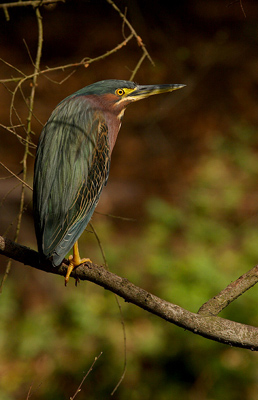
- Using their feet. Snowy egrets are brilliant white, medium sized herons that have black legs and yellow-feet. They often use their bright feet to attract or even scare up small fish. When they fish come close, they grab them.
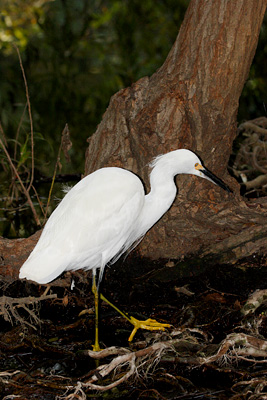
- Hunting by running. Reddish egrets are a medium sized heron that often catches small fish by literally running them into the shallows. There quick, seemingly erratic dashes send their prey fleeing in front of them.
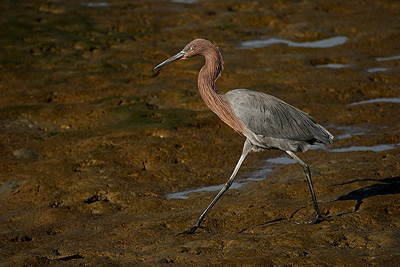
Grooming
Hunting can be messy business, so another bird behavior you
can often observe among herons is grooming.
This is their version of daily hygiene, and herons must take very good
care of their feathers to survive in the wild.
Some herons have a special claw on their middle toe that has a toothed
edge along one side. This is the
grooming claw, and acts like a comb as the heron runs it through its feathers.
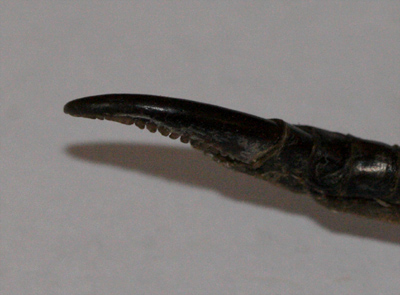
Herons also have a patch of feathers on their breasts and on their thighs called “powder down.” These feathers are continuously breaking up into a fine powder, which the herons apply to any slime or other gooey stuff they might get on their bodies as they hunt. The powder absorbs the slime and crumbles away, leaving them relatively clean. They use their grooming claw and beak to help spread this powder down, and they also to remove it when it has done its work.

Social Interactions
Another common bird behavior to observe among herons is social interactions. Some heron species are relatively tolerant of each other when hunting, while others are not. For instance, if 2 great blue herons approach each other too closely while hunting, the dominant one will chase the second bird away.
These same birds may have to tolerate each other considerably more when they are nesting, since like many other heron species, great blue herons nest in colonies (called heronries). Herons are devoted parents and in many species, both sexes help rear and care for the young.
Be More Prepared For Your Next Outdoor Adventure!

Don't leave home without knowing these six essential survival skills. Our free survival mini guide reveals the strategies of:
- Shelter & fire to prevent the number one cause of death
- Obtaining clean water to avoid life-threatening dehydration
- Common wild survival foods and other critical skills!

Thermoregulation
Another common bird behavior to observe with herons is
temperature regulating actions (called thermoregulation). Herons that live in cooler parts of North
America may be observed standing in full sun, with their wings down and their
mouths open (see below). This is one way for them to
control their body temperatures.
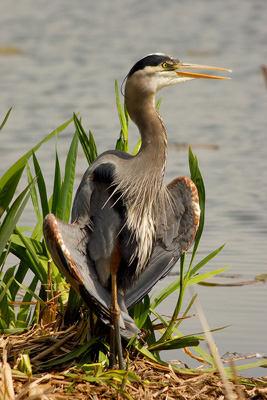
Although herons are endothermic - or “warm-blooded” - they can’t sweat or shiver the way we can. Instead, they can flutter their throat when too hot, not unlike a dog panting on a hot day. They can also use the extra warmth of the sun by exposing as much of their body to the sun as they can. Herons will fluff up their feathers on a cold day to help trap in their body heat.
Resting
Herons rest during the day by folding up their neck and sitting quietly in a sheltered spot. At night, many herons demonstrate a bird behavior that might surprise you: sleeping in trees. Many herons sleep in trees at night, to get them off the ground where land dwelling predators might catch them off guard.
Final Thoughts on Bird Behavior
Observing bird behavior, especially herons, can be a very rewarding activity. There is always more to learn about them. Visit your local wetland areas, especially wildlife refuges and observe some wild birds. Watch closely, ask questions and enjoy!
By the way, when you're out birding, it's important to know how to stay safe in the outdoors, especially if you were to get lost. Right now you can get a free copy of our mini survival guide here, where you'll discover six key strategies for outdoor emergencies, plus often-overlooked survival tips.
Recommended Books
The Sibley's Guide to Bird Life and Behavior by David Allen Sibley
Stokes Guide to Bird Behavior Vol I, II, & III by Donald W. Stokes
Helpful Online Resources:
Related Courses:

About the Author: Filip Tkaczyk is a periodic guest teacher at Alderleaf. He also wrote the field guide Tracks & Sign of Reptiles & Amphibians. Learn more about Filip Tkaczyk.
Return from Bird Behavior to Birding Articles
Is The Essential Wilderness Survival Skills Course Right for You? Take the "Online Survival Training Readiness" Quiz
See for yourself if this eye-opening course is a good fit for you. It takes just a few minutes! Get your Survival Training Readiness Score Now!

Grow Your Outdoor Skills! Get monthly updates on new wilderness skills, upcoming courses, and special opportunities. Join the free Alderleaf eNews and as a welcome gift you'll get a copy of our Mini Survival Guide.

 The Six Keys to Survival: Get a free copy of our survival mini-guide and monthly tips!
The Six Keys to Survival: Get a free copy of our survival mini-guide and monthly tips!
Learn more